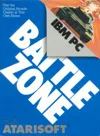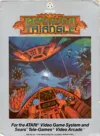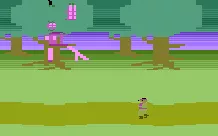 Atari 2600 Games List
Atari 2600 Games List
[ View Trivia ] [ View all Platforms ]
The Atari 2600 was released in September 1977 by Atari, Inc for $189.95 (inflation adjusted: $945.70 in 2023). Branded as the Atari Video Computer System (Atari VCS) from its release until November 1982, the VCS was bundled with two joystick controllers, a pair of paddle controllers, and a game cartridge (initially Combat and later Pac-Man).
[ Buy from eBay ] [ Buy the new 2600+ from Atari ]
There are 602 video games on Atari 2600. They were released between the years 1977 and 2023. 524 people from 188 developers and publishers are credited with these titles!
Upgrade to MobyPlus to download a CSV or JSON file of all games on this platform and view the chart of games released per year.
[ All ] [ A · B · C · D · E · F · G · H · I · J · K · L · M · N · O · P · Q · R · S · T · U · V · W · X · Y · Z ] [ 1977 · 1978 · 1979 · 1980 · 1981 · 1982 · 1983 · 1984 · 1985 · 1986 · 1987 · 1988 · 1989 · 1990 · 1992 · 1995 · 1996 · 1997 · 1998 · 1999 · 2000 · 2001 · 2002 · 2003 · 2004 · 2005 · 2006 · 2007 · 2008 · 2010 · 2011 · 2012 · 2013 · 2014 · 2016 · 2017 · 2019 · 2021 · 2022 ]
You can also view via the game browser for more sorting and filtering options.
There are 39 Atari 2600 games starting with the letter B.






































